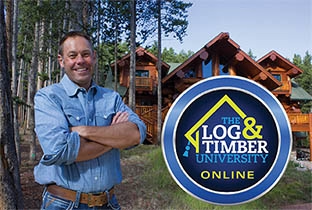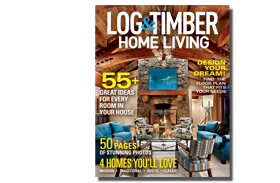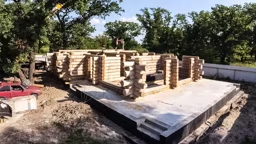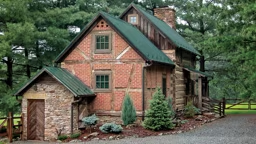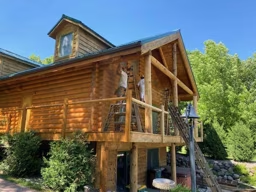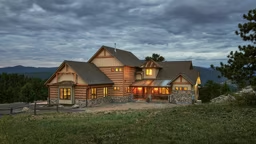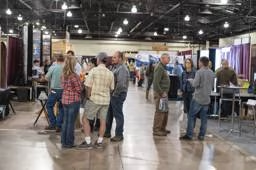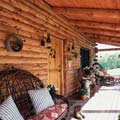 |
The Truth About Handcrafted Log Homes Learn some of the defining characteristics of handcrafted log homes |
It would seem pretty simple: Milled logs are cut timbers run through a sawmill, and handcrafted means the logs are cut by hand...if only it were that easy to define. Here are five must-know items about handcrafted log homes:
1: Though handcrafted log homes have a legacy that's centuries in the making (and still going strong), never let it be said that today's handcrafter is behind the times. Handcrafted homes are meticulously planned, notched, fitted and built by craftspeople with trained eyes and skilled hands assisted by the right tools.
2: Today's handcrafter has a bevy of motorized tools at his or her disposal and uses them alongside traditional tools of the trade like a drawknife (a long two-handled blade used to strip the bark off the tree). But the one piece of machinery the handcrafter doesn't use is a sawmill, so the logs aren't uniform in shape or diameter—which is all part of the charm.
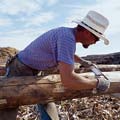 3: One of handcrafting's defining traits is a lack of uniformity with the logs—that goes not only for size and shape, but also the look and feel of each hand-hewn timber. One method, skip-peeling (pictured), takes this idea even further by intentionally leaving traces of bark on each log. The look is unquestionably rustic. For a more even tone, handcrafters will strip the bark from the log, leaving nothing but the chiseled look of the wood behind.
3: One of handcrafting's defining traits is a lack of uniformity with the logs—that goes not only for size and shape, but also the look and feel of each hand-hewn timber. One method, skip-peeling (pictured), takes this idea even further by intentionally leaving traces of bark on each log. The look is unquestionably rustic. For a more even tone, handcrafters will strip the bark from the log, leaving nothing but the chiseled look of the wood behind.4: A number of materials can be used to seal a handcrafted home from the elements, but one of the most popular is chinking. It not only gives the walls character, but it also provides a tight, flexible grip between the log courses. Chinking isn't required for all systems and other sealants are available, but for functionality and flair, chinking's appeal can't be denied.
5: Along with wood species, you'll have to decide what shape you want your logs to be. Two common handcrafted log profiles (as they're called) are round and square, though most handcrafters offer other options as well. When it comes to corners, many handcrafters favor saddle-notch or dovetail corners to create a tight fit.
